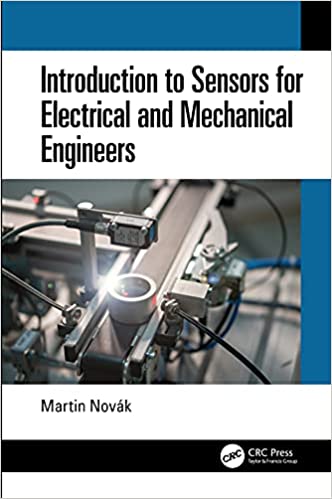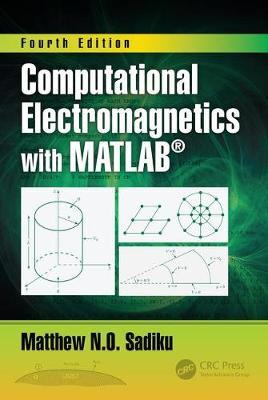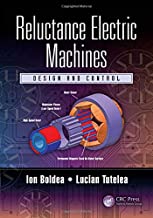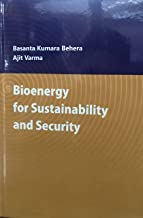Introduction to Sensors for Electrical and Mechanical Engineers
Original price was: ₹9,154.50.₹7,323.60Current price is: ₹7,323.60.
ISBN: 9780367518219
Author/Editor: Martin Nov?
Publisher: CRC Press
Year: 2020
1 in stock (can be backordered)
Description
Sensors are all around us. They are in phones, cars, planes, trains, robots, mils, lathes, packaging lines, chemical plants, power plants, etc. Modern technology could not exist without sensors. The sensors measure what we need to know and the control system then performs the desired actions. When an engineer builds any machine he or she needs to have basic understanding about sensors. Correct sensors need to be selected for the design right from the start. The designer needs to think about the ranges, required accuracy, sensor cost, wiring, correct installation and placement etc. Without the basic knowledge of sensors fundamental no machine can be built successfully today.
The objective of this book is to provide the basic knowledge to electrical and mechanical engineers, engineering students and hobbyist from the field of sensors to help them with the selection of “proper” sensors for their designs. No background knowledge in electrical engineering is required, all the necessary basics are provided. The book explains how a sensor works, in what ranges it can be used, with what accuracy etc. It also provides examples of industrial application for selected sensors.
The book covers all the major variables in mechanical engineering such as temperature, force, torque, pressure, humidity, position, speed, acceleration etc.
The approach is always as follows:
– Explain how the sensor works, what is the principle
– Explain in what ranges and with what accuracy it can work
– Describe its properties with charts, eventually equations
– Give examples of such sensors including application examples
Additional information
| Weight | 0.45 kg |
|---|
Product Properties
| Year of Publication | 2020 |
|---|---|
| Table of Contents | Measurement basics 1.1 General properties 1.2 Static properties 1.3 Dynamic properties 1.4 Uncertainty of measurement 2 Circuits for sensors 2.1 Voltage signal 2.2 Current signal 2.3 Bridge circuits 2.4 Difference amplifier 2.5 Instrumentation Amplifier 3 Temperature - contact 3.1 Resistive temperature detectors (RTD) 3.2 Thermistors 3.3 Circuits for RTDs 3.4 Thermocouples 3.5 Temperature sensor placement 4 Temperature - non contact 4.1 Absorption in atmosphere and in materials 4.2 Materials for IR optics 4.3 Monochromatic pyrometers 4.4 Total radiation pyrometers 4.5 IR thermometers 4.6 Principles of correct use of IR thermometers 5 Force 5.1 Metallic strain gauges 5.2 Semiconductor strain gauges 5.3 Circuits for strain gauges 5.4 Strain gauge placement 5.5 Load cells and example applications 6 Torque 6.1 Torque dynamometer 6.2 Electronic torque sensors 7 Position 7.1 Resistive sensor 7.2 Inductive sensors 7.3 Capacitive sensors 7.4 Magnetic (Hall) sensors 7.5 Optical sensors 7.6 Incremental rotary encoders (IRC) 7.7 Absolute rotary encoders 7.8 Microwave position sensor (radar) 7.9 Interferometers 7.10 Proximity sensors 8 Speed and RPM 8.1 Electromagnetic - tachodynamo 8.2 Optoelectronic speed sensor 8.3 Inductive speed sensor 8.4 Hall speed sensor 8.5 Stroboscope 9 Acceleration 9.1 Piezoelectric acceleration sensor 9.2 Piezoresistive acceleration sensor 9.3 Acceleration sensors with measured displacement - general principle 9.4 Capacitive accelerometer 9.5 Optical accelerometer 10 Pressure 10.1 Calibration pressure gauges 10.2 Deformation manometers 10.3 Bolometric vacuum meter - PIRANI 10.4 Ionization pressure sensor 10.5 Placement of pressure sensors 11 Humidity 11.1 Dew-point hygrometer 11.2 Psychrometer 11.3 Hygrometer with dry electrolyte 12 Flow 12.1 Restriction flow meters 12.2 Rotameter 12.3 Turbine flowmeter 12.4 Wire anemometer 12.5 Ultrasonic flowmeter 12.6 Electromagnetic flowmeter 12.7 Coriolis flowmeter 13 Liquid level 13.1 Visual liquid level meter 13.2 Float 13.3 Hydro-static sensor 13.4 Bubbler 13.5 Electrical conductivity level sensor 13.6 Thermal conductivity level sensor 13.7 Radioisotope liquid level meter 13.8 Capacitive liquid level sensing 13.9 Ultrasonic liquid level meter 13.10 Radar liquid level meter 13.11 Vibrating level switches 14 Example labs 14.1 Temperature-contact - thermocouples 14.2 Temperature- non-contact - emissivity 14.3 Position - LVDT 14.3.1 Introduction 14.4 Position - proximity sensors - influence of material 14.5 Position - linear displacement sensors References Other recommended literature Appendix A Pt100, DIN/EN/IEC 60751, = 0.00385 B Pt100, = 0.00392 C Pt500 D Pt1000 E Ni120 F Cu10 G Thermocouple type J H Thermocouple type K I Thermocouple type T J Thermocouple type E K Thermocouple type R L Thermocouple type S M Material emissivity tables |
| Author | Martin Nov? |
| ISBN/ISSN | 9780367518219 |
| Binding | Hardback |
| Edition | 1 |
| Publisher | CRC Press |
You must be logged in to post a review.






Reviews
There are no reviews yet.